Project Description

Before the surgery, the doctor’s team asked IEMAI3D for help. IEMAI3D printed out the replacement prosthesis according to the actual situation. The prosthesis that needed to be replaced was printed by IEMAI. After a few discussions and trials. PEEK material and MAGIC HT PRO were chosen to print the tibial prosthesis. Based on the preoperative diagnosis and CT reconstruction data simulation; two sets of surgical plans are produced and printed two tibial prostheses. 3D printing technology greatly ensured the smooth operation.
- Patient Information:
Male, 34 years old, needed a prosthesis to replace one of the broken tibial segments caused by an accident.
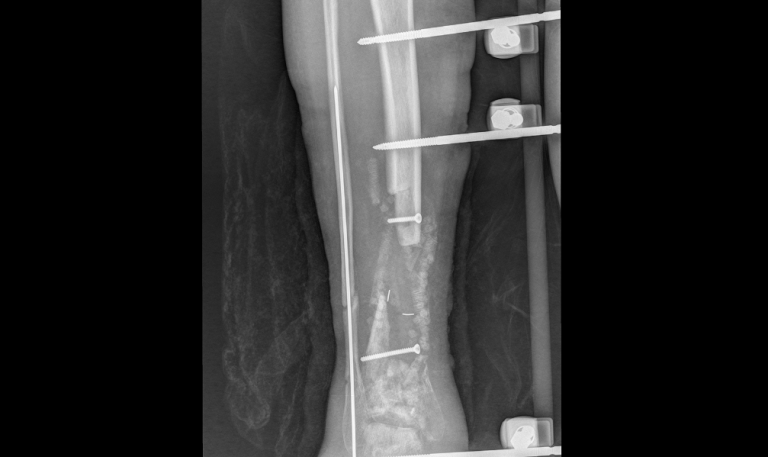
Preoperative data (orthotropic)

Preoperative data (lateral)
2. Preoperative Planning:
Based on the patient’s preoperative data, a 3D reconstruction of the patient’s medical image for tibial prosthetic joint replacement surgery is performed, and the surgeon performs a preoperatively conducts a comprehensive and integrated evaluation of the patient, as seen in the figure.
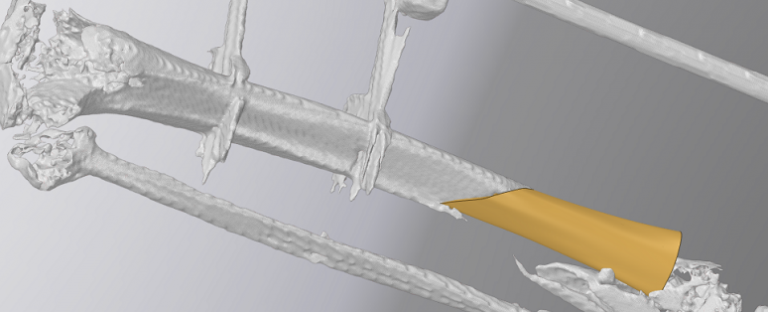
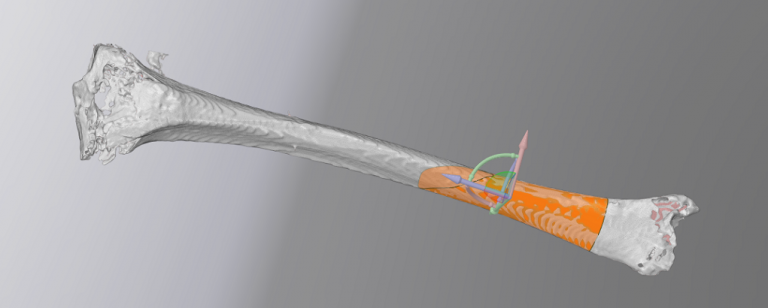
3. Surgical Implementation:
Based on the 3D reconstructed model, the tibial prosthesis was printed using MAGIC-HT-PRO and the surgeon performed the replacement prosthesis surgery as seen in the figure.

Remote Plasticity Design

Installlation (1)

Installlation (2)

Complete
4. Postoperative Results.
The surgery was completed successfully, and the patient recovered well after surgery, waiting for the removal of stitches, and waiting for discharge from the hospital.
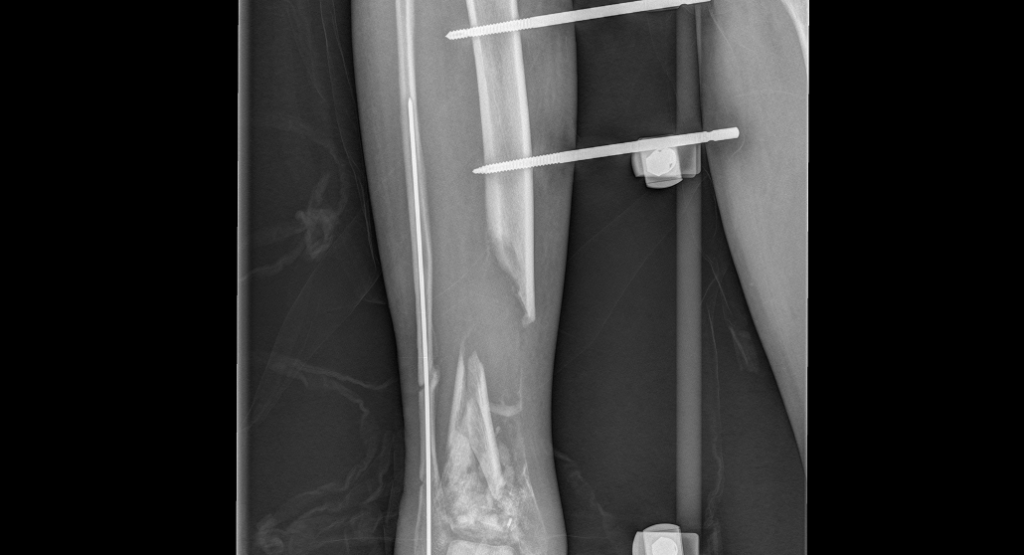
Post-operative data ( orthotropic )
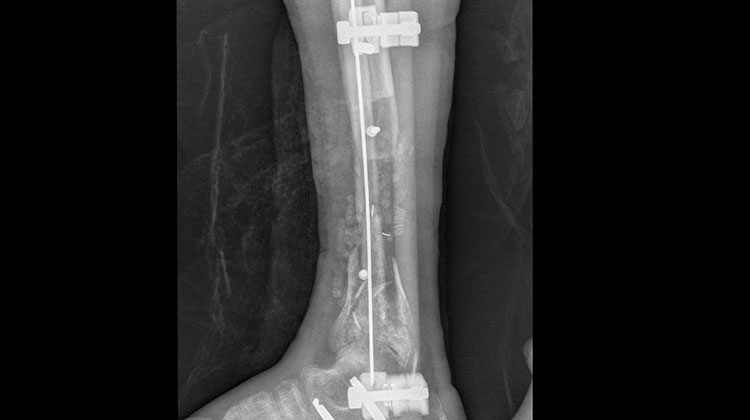
Post-operative data ( lateral )
Advantages of 3D printing technology in medical applications
For patients with bone defects or deformities, conventional standardized medical implants are often inadequate due to individual differences and varying degrees of disease. Conventional standardized medical implants often do not meet the requirements. Therefore, the use of 3D printing Therefore, 3D printing technology can be used to quickly customize personalized and high-performance orthopedic implants to meet the specific needs of patients. The 3D printing technology can be used to quickly customize personalized, high performance orthopedic implants to meet the specific needs of patients.
Ideal material for 3D printing implants: PEEK
Compared with traditional metallic implant materials, PEEK is a semi-crystalline high molecular material with light weight and high performance. It has the advantages of light weight, elastic modulus close to that of bone, wear resistance, excellent biocompatibility, and physical stability. It is one of the ideal materials for bio prosthesis implants nowadays.

Excellent biosynthetic properties:
PEK has good biocompatibility and is non-cytotoxic, mutagenic, carcinogenic, and non-allergenic, which are the most fundamental requirements for a material to be suitable for implantation.
X-ray Penetrability:
Compared to metals, PEEK can be penetrated by X-rays and has good visual properties: 1. avoiding artifacts on the X-Ray film; 2. performing surgery with the aid of CT scanning or MRI, which helps the surgeon to adjust the position of the implant during surgery and easily follow the healing procedure after surgery. This allows for great monitoring of bone growth and healing.
The elasticity modulus is closer to that of cortical bone:
PEEK is a combination of rigidity and flexibility, with an elastic modulus that is closer to the bone, allowing it to mitigate the stress masking effect, so that the stress on the bone is not entirely borne by the implant, which resulting in healthier, longer-lasting bones. Since its introduction to medical field, PEEK has been active in the field of intervertebral fusion in a variety of medical devices.
↓↓Brand Introduction of IEMAI 3D↓↓
Imai Intelligent Technology Co. Ltd. is a high-tech enterprise in China focusing on 3D printing R&D and production. Its brand IEMAI 3D is a global industrial grade 3D printer brand, committed to provide users with the “All in one” 3D printing solution of multi material compatible issue. IEMAI 3D supports most of the thermoplastic materials in the 3D printing markets and assist the user to resolve the issue encounter during manufacturing, and all 3D printers and materials have contained CE and ROHS certification. We attach great importance to brand building and have obtained trademarks certificates from China, United States, and the European Union. We pursue core technology research and development, and have obtained software copyrights, invention patents, utility model patents, appearance design patents, and the title of national high-tech enterprise. At present, our 3D printing solutions have been applied to aerospace, automotive, petrochemical, medical, dental and electronics manufacturing.
Project Details
- Prototype: Medical Impant
Setup Used
- Printer Used: MAGIC-HT-PR0
- Material Used:PEEK
